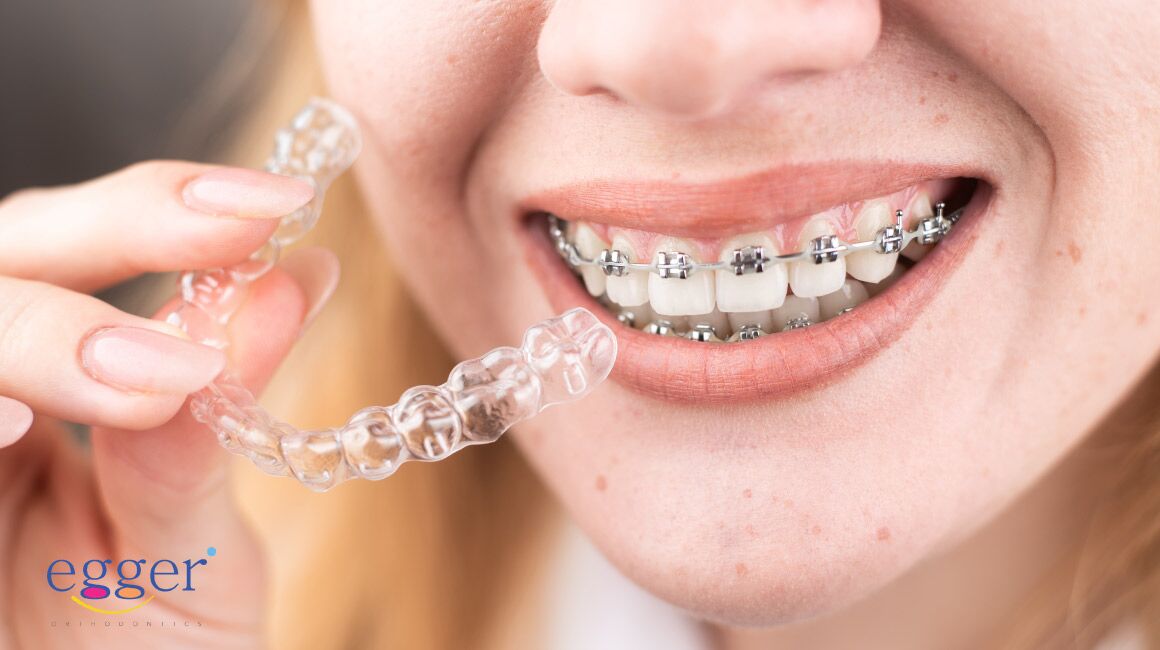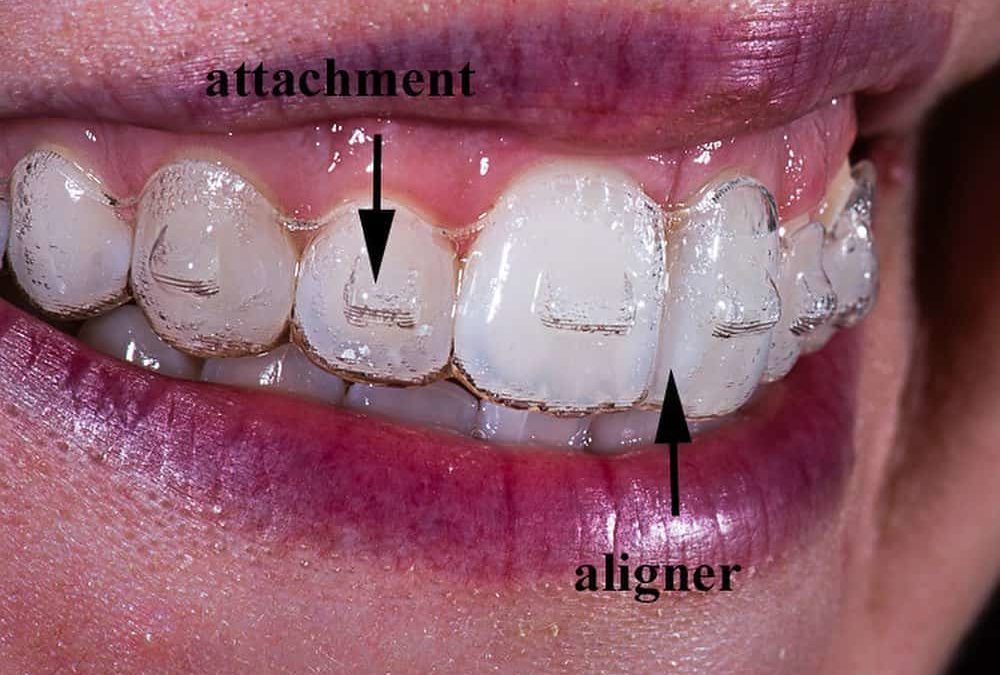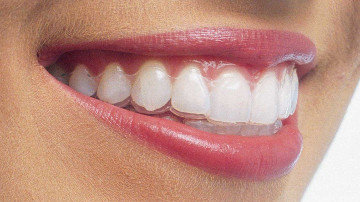How Invisalign Works: Your Guide to Clear Aligners and Their Effectiveness
How Invisalign Works: Your Guide to Clear Aligners and Their Effectiveness
Blog Article
Invisalign vs. Standard Braces: Which Alternative Is Right for You?
When thinking about orthodontic therapy, the selection between Invisalign and typical braces offers numerous crucial factors that warrant careful evaluation. Invisalign uses a discreet option with removable aligners, while conventional dental braces supply a much more visible yet efficient option for serious misalignment. Each option incorporates unique benefits and downsides associated with looks, comfort, therapy period, and expense. Comprehending these nuances is critical for making a notified decision that aligns with your individual choices and way of life. The inquiry stays: which choice will ideal meet your orthodontic needs and expectations?
Overview of Therapy Choices

In contrast, typical dental braces are composed of steel brackets and cables that are adhered to the teeth. This technique uses continual stress over time to achieve alignment. While efficient for intricate orthodontic problems, traditional braces need regular check outs for adjustments and can position difficulties in preserving oral health as a result of the difficulty of cleaning up about braces and cables.
Both options have their qualities, and the option commonly depends upon specific dental problems, lifestyle choices, and patient compliance. Eventually, consulting an orthodontic professional is crucial for establishing the most appropriate therapy strategy customized to specific needs. Understanding the nuances of each option can dramatically influence the total success of orthodontic treatment.
Aesthetic Factors To Consider
A significant factor affecting the choice between Invisalign and typical braces is the aesthetic charm each therapy uses. Invisalign aligners are crafted from clear plastic, making them essentially invisible when put on.
On the other hand, typical braces include steel brackets and wires, which can be extra recognizable. While advancements in orthodontic innovation have actually caused the growth of smaller braces and tinted elastics, standard braces still maintain an even more conspicuous profile. For some individuals, the exposure of braces might prevent them from looking for needed therapy.
Eventually, the choice between Invisalign and standard braces may depend upon individual preferences concerning aesthetic appeals. Patients who focus on discretion frequently favor Invisalign, while those that are much less concerned regarding presence might go with traditional braces. Recognizing the visual implications of each alternative is crucial for making an informed choice that straightens with one's way of life and preferences.
Comfort and Convenience

In terms of convenience, Invisalign aligners are removable, enabling people to appreciate their preferred foods without limitation and preserve optimum dental hygiene. Cleaning and flossing are streamlined, as the aligners can be taken out during these routines, whereas traditional dental braces call for careful steering around brackets and wires.
In contrast, conventional braces blog here necessitate normal changes, making them less practical for those with hectic timetables. On the whole, the comfort and benefit of Invisalign make it an attractive choice for lots of people seeking orthodontic treatment.
Therapy Period and Effectiveness
While both Invisalign and typical braces are reliable in dealing with dental imbalances, the duration of therapy can vary considerably in between the two options. Generally, Invisalign treatment can take anywhere from 12 to 18 months, relying on the complexity of the instance. The clear aligners work by slowly changing teeth into their desired placements, and routine follow-ups with an orthodontist assistance guarantee progression stays on track.
On the other hand, standard dental braces commonly need a longer dedication, typically ranging from 18 months to three years. This results from their set nature and making use of brackets and wires, which can be more reliable for intricate cases and serious imbalances (Invisalign). The treatment performance of standard dental braces is well-documented, as they permit precise modifications and better control over tooth activity
Eventually, the choice in between Invisalign and typical braces might hinge on both the awaited treatment period and the particular dental concerns available. Consulting with an orthodontist is vital, as they can give customized recommendations based on specific needs, making sure the chosen technique lines up with desired durations and outcomes.
Cost Contrast and Insurance Policy Alternatives
Expense plays a considerable function in the decision-making process visit their website for individuals taking into consideration orthodontic therapy, whether deciding for Invisalign or typical dental braces. Usually, the expense of Invisalign ranges from $3,000 to $8,000, while standard dental braces normally cost in between $2,000 and $6,000. Aspects affecting these expenses consist of the complexity of the situation, the period of treatment, and geographical area.
Lots of oral insurance plans offer partial protection for orthodontic treatments, yet the specifics can differ widely. Generally, typical dental braces might be extra regularly covered by insurance coverage plans contrasted to Invisalign, which some insurance providers categorize as an aesthetic procedure.
Additionally, several orthodontic methods offer adaptable layaway plan, making both treatment alternatives a lot more obtainable. People need to make inquiries regarding potential funding alternatives and price cuts for upfront settlements. Examining the total cost, including insurance coverage advantages and settlement plans, is vital for making an informed decision that aligns with both visual preferences and budget plan considerations.

Conclusion
In recap, the selection between Invisalign and typical braces rests on multiple variables, consisting of aesthetic preferences, comfort, treatment period, and cost. Invisalign uses a discreet, detachable option that facilitates dental hygiene and nutritional adaptability, while traditional braces may be preferable for complicated oral concerns and commonly come at a lower price factor. Inevitably, examination with an orthodontist is vital to examine individual circumstances and identify one of the most appropriate treatment alternative for accomplishing ideal dental alignment.
When thinking about orthodontic treatment, the choice in between Invisalign and conventional braces presents several important elements that warrant careful evaluation.Comparing Invisalign and typical braces exposes distinct therapy alternatives for orthodontic adjustment.While both Invisalign and standard dental braces are efficient in dealing with oral imbalances, directory the duration of therapy can differ considerably between the two choices.Price plays a substantial duty in the decision-making process for individuals considering orthodontic therapy, whether deciding for Invisalign or conventional braces.In summary, the option in between Invisalign and standard dental braces pivots on multiple elements, including visual choices, convenience, therapy period, and cost.
Report this page